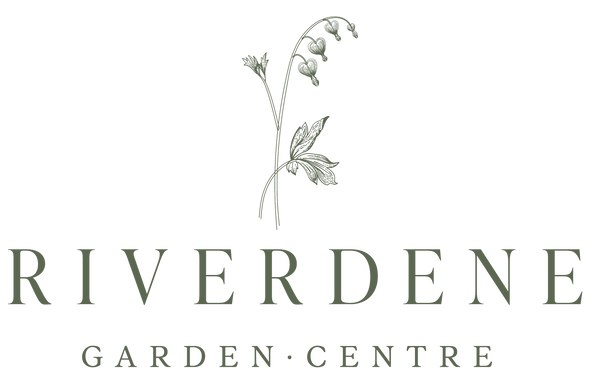Riverdene Garden Centre
Heyer #12 Apple
Heyer #12 Apple
Couldn't load pickup availability
Heyer #12 Apple (Malus ‘Heyer #12’) Care Guide
Overview:
Heyer #12 is a cold-hardy apple variety developed in Saskatchewan around 1940 by A. Heyer. It is valued in prairie and northern climates for its toughness under harsh conditions.
The fruit is medium-sized, greenish-yellow, with a coarse white flesh. It is primarily considered a cooking apple, as it tends to be quite tart and oxidizes quickly.
It is also noted for its drought resistance and moderate growth rate, and it requires a pollinator to set fruit.
1. Planting & Growing Conditions
-
Hardiness Zone: Very hardy; reports suggest success even beyond zone 2.
-
Mature Size & Habit:
• Produces a moderately vigorous, open spreading tree with wide-angled branches.
• Trees bear fruit as early as 3 years old under good conditions. -
Light Requirements: Full sun (at least 6+ hours) is ideal for fruit production and health.
-
Soil:
• Prefers well-drained, moderately fertile soils.
• Adaptable to somewhat dry or marginal soils given its drought tolerance. -
Spacing: Leave ample space to accommodate the tree’s spreading habit and ensure good air circulation.
2. Fruit & Harvesting
-
Ripening Time: Early to mid August (early season).
-
Fruit Characteristics:
• Diameter: ~5–6 cm (approx. 2 to 2½ inches)
• Skin: Greenish-yellow to straw-colored when fully mature.
• Flesh: White, medium-coarse texture, tart to mildly acidic. -
Uses: Best suited for cooking, baking, sauces, and preserves. Not typically eaten fresh due to tartness and oxidation.
-
Storage: Very limited — tends to store only 1-2 weeks under cold conditions.
-
Harvesting Note: Because the fruit tends to drop as it ripens, it should be picked just before full maturity for best retention.
3. Pollination & Fruit Set
-
Self-sterile: Heyer #12 requires a different apple or crabapple variety that blooms around the same time for cross-pollination.
-
The pollinator should overlap bloom timing and be within proximity to facilitate pollination.
4. Watering & Establishment
-
During the first 2–3 years, provide regular watering during dry periods to help the root system establish itself.
-
After established, Heyer #12 demonstrates drought resilience, but supplemental watering in drought helps maintain productivity and health.
-
Use mulch to conserve moisture and moderate soil temperature, while keeping it away from the trunk.
5. Fertilizing
-
Apply a balanced, slow-release fertilizer in early spring to support vegetative growth and fruiting.
-
Avoid over-fertilization—especially high nitrogen—that may reduce fruit quality or increase disease susceptibility.
6. Pruning & Maintenance
-
Best Time: Late winter to early spring, while the tree is dormant.
-
How to Prune:
• Remove dead, diseased, or crossing branches.
• Thin interior growth to improve light penetration and airflow.
• Avoid heavy pruning in late summer, which can stress the tree or delay fruiting.
7. Pest & Disease Considerations
-
Heyer #12 is reported to be very resistant to fire blight, one of the more serious apple diseases in many climates.
-
However, as with all apple trees, be wary of common issues such as apple scab, codling moth, aphids, leaf spots, rusts, and others.
-
Practices to reduce risk: good sanitation (clean fallen leaves/fruit), good airflow, proper pruning, and monitoring for early signs.
8. Winter & Cold Protection
-
Extremely cold-hardy, often successful in the coldest apple-growing zones. Reports indicate hardiness to zone 1 by some sources.
-
In exposed or young trees, consider trunk guards or mulching to protect against winter sunscald and frost damage.
9. Landscape Uses
Excellent choice for northern orchards and cold-climate apple growers
Can be used as a small to medium yard fruit tree
Good as a production tree for cooking apples in home or small-scale orchard settings
Works well in mixed fruit plantings where diversity of harvest times is desired
